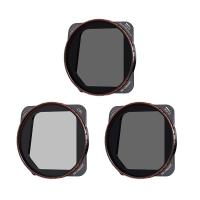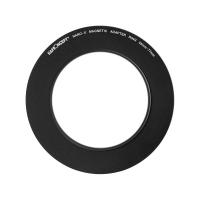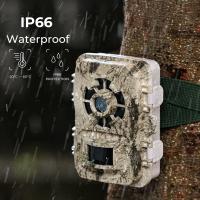How To Stain A Microscope Slide ?
To stain a microscope slide, first prepare a thin smear of the sample on the slide. Then, choose a suitable stain for the type of sample being observed. Common stains include methylene blue, eosin, and hematoxylin. Apply a few drops of the stain onto the smear and let it sit for the recommended time, usually a few minutes. Rinse the slide with distilled water to remove excess stain and allow it to air dry. The slide is now ready to be observed under a microscope.
1、 Cleaning the slide
How to stain a microscope slide:
Staining a microscope slide is an essential step in preparing a sample for observation under a microscope. Staining helps to highlight specific structures or components of the sample, making it easier to observe and analyze. Here are the steps to follow when staining a microscope slide:
1. Cleaning the slide: Before staining, it is important to clean the slide thoroughly to remove any debris or contaminants that may interfere with the staining process. Use a clean, lint-free cloth or tissue to wipe the slide clean.
2. Preparing the stain: There are many different types of stains available for use in microscopy, each with its own specific purpose. Choose the appropriate stain for your sample and prepare it according to the manufacturer's instructions.
3. Applying the stain: Place a drop of the stain onto the sample, making sure to cover the entire area of interest. Allow the stain to sit for the recommended amount of time, usually a few minutes.
4. Rinsing the slide: After the staining process is complete, rinse the slide with distilled water to remove any excess stain. Be careful not to rinse too vigorously, as this can wash away the sample.
5. Drying the slide: Once the slide is rinsed, gently blot it dry with a clean, lint-free cloth or tissue. Avoid rubbing the slide, as this can damage the sample.
It is important to note that different stains may require different techniques or additional steps. Additionally, some stains may be toxic or hazardous, so it is important to follow all safety precautions when working with stains.
In recent years, there has been a growing interest in using non-toxic, environmentally friendly stains for microscopy. These stains are made from natural or renewable sources and are less harmful to both the user and the environment. As the field of microscopy continues to evolve, it is likely that we will see more advances in staining techniques and materials.

2、 Preparing the staining solution
How to stain a microscope slide:
Staining a microscope slide is an essential technique in microscopy that enhances the contrast and visibility of the specimen. Here are the steps to follow when staining a microscope slide:
1. Prepare the specimen: The first step is to prepare the specimen by fixing it onto the slide. This can be done by using a mounting medium or by air-drying the specimen onto the slide.
2. Choose the appropriate stain: There are various types of stains that can be used to enhance the visibility of the specimen. The choice of stain will depend on the type of specimen and the information that needs to be obtained.
3. Preparing the staining solution: The staining solution can be prepared by dissolving the stain in a suitable solvent such as water or alcohol. The concentration of the stain will depend on the type of stain and the desired intensity of the staining.
4. Apply the stain: The staining solution can be applied to the specimen by dropping it onto the slide or by immersing the slide into the staining solution. The staining time will depend on the type of stain and the desired intensity of the staining.
5. Rinse the slide: After staining, the slide should be rinsed with water to remove any excess stain. The slide can then be air-dried or mounted with a cover slip.
It is important to note that staining can affect the morphology and structure of the specimen. Therefore, it is essential to choose the appropriate stain and staining protocol to obtain accurate and reliable results. Additionally, new staining techniques and protocols are constantly being developed to improve the quality and efficiency of staining in microscopy.

3、 Applying the stain
How to stain a microscope slide:
Staining a microscope slide is a crucial step in preparing a sample for observation under a microscope. The process involves applying a dye or stain to the sample to enhance its visibility and highlight specific structures or features. Here are the steps to follow when staining a microscope slide:
1. Prepare the sample: The sample should be cleaned and dried before staining. If necessary, it can be fixed with a fixative solution to preserve its structure.
2. Choose the stain: There are various types of stains available, each with its specific purpose. Some common stains include methylene blue, eosin, and hematoxylin. Choose the stain that best suits your sample.
3. Apply the stain: There are different methods of applying the stain, depending on the type of stain and the sample. For example, some stains require heat fixation, while others can be applied directly to the sample. Follow the instructions for the specific stain you are using.
4. Rinse the slide: After applying the stain, rinse the slide with distilled water to remove any excess stain.
5. Dry the slide: Once the slide is rinsed, dry it with a clean cloth or air-dry it.
Applying the stain is a critical step in staining a microscope slide. It is essential to follow the instructions for the specific stain you are using to ensure accurate results. Additionally, it is crucial to handle the sample and slide with care to avoid contamination or damage. With proper staining techniques, you can enhance the visibility of your sample and observe its structures and features under a microscope.

4、 Washing the slide
How to stain a microscope slide is a crucial skill for anyone working in the field of microscopy. Staining a slide allows for better visualization of the specimen under the microscope. There are several methods for staining a slide, including simple staining, differential staining, and special staining. However, before staining the slide, it is essential to wash it properly.
Washing the slide is the first step in preparing a slide for staining. The slide should be washed with soap and water to remove any dirt or debris that may be present on the surface. After washing, the slide should be rinsed with distilled water to remove any soap residue. It is important to handle the slide carefully during this process to avoid scratching the surface.
In recent years, there has been a growing concern about the use of harsh chemicals in the laboratory. As a result, many researchers are now opting for more environmentally friendly alternatives. One such alternative is the use of green detergents for washing microscope slides. These detergents are biodegradable and do not contain harmful chemicals, making them a safer option for both the user and the environment.
In conclusion, washing the slide is an essential step in preparing a microscope slide for staining. It is important to handle the slide carefully and use environmentally friendly detergents to avoid any damage to the specimen or the environment. By following these guidelines, researchers can ensure that their slides are properly prepared for staining and that they are doing their part to protect the environment.









































